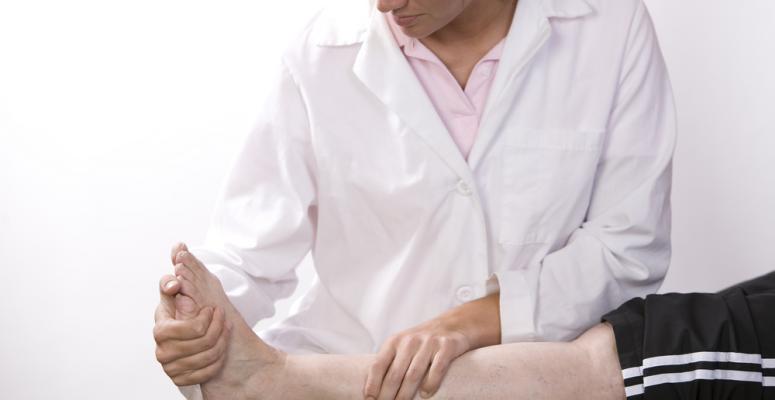
- What are the symptoms of bunions?
- Why does bunion surgery cause scar tissue?
- What are some symptoms of scar tissue in the feet after bunion surgery?
- How can you break up scar tissue from bunion surgery?
- Alliance PTP is ready to help you find top-notch PT for help breaking up scar tissue after bunion surgery
Bunions are bumps that form near the base of the big toe. They occur when the joint in the big toe becomes misaligned and a bump in the bone forms as a result. This is a type of bone condition that is most often the result of extended periods of pressure on the toes. It’s usually seen in older adults who have worn constricting shoes for years on end.
Approximately 1 in 3 people get bunions in their lifetime. In some severe cases, bunions may necessitate surgery. For those who get bunion surgery, scar tissue usually follows as a result. Scar tissue can be frustrating to deal with for some, because it reduces range of motion and mobility and can cause stiffness and discomfort. If you had surgery a few years back, it may have caused you discomfort soon after, but it could be just now affecting you. For more detailed information on bunion surgery and breaking up scar tissue, keep reading below.
What are the symptoms of bunions?
There are a few different symptoms of bunions, and some may indicate the need for bunion surgery more than others. Read more below for an extensive list of bunion symptoms.
- Bump on the outside of your foot — One of the most common symptoms of bunions is a prominent bump on the outside of the foot. It’s a telltale sign of a bunion. The bump indicates abnormal bone growth in the foot and is one of the most common ways people can tell if they have bunions or not.
- Calluses — Calluses may also be present in those with bunions. They most often occur on the insides of the toes, where the big toe continues to rub on the adjacent toe.
- Chronic pain — Many also experience chronic pain in their feet when the direction of the bone growth has become abnormal. Pain can be in the big toe or in the neighboring toes that are being pushed by the big toe.
- Limited range of motion — Another symptom of bunions includes a limited range of motion. It can become harder to move the toes, which then may become stiff and uncomfortable.
- Swelling or redness — Swelling of the toes and feet may be present in patients with bunions, as well as some possible redness. Swelling can also make the feet uncomfortable and may cause pain.
Why does bunion surgery cause scar tissue?
Scar tissue develops when layers of the dermis and tissue become damaged. During surgery, incisions on the surface of the skin and the tissue beneath the skin may experience minor damage as well. Growing scar tissue is your body’s natural response, but because this tissue is not as elastic as your original tissue, it may cause issues with mobility for some.
What are some symptoms of scar tissue in the feet after bunion surgery?
- Stiffness — Scar tissue in the feet that develops after bunion surgery can cause stiffness in patients. It can make the area that was operated on harder to move and may make it harder to move without experiencing discomfort.
- Limited mobility — Another way that scar tissue can affect patients after bunion surgery is by limiting mobility and range of motion. Without the tissue being broken up when it forms after surgery, it can become harder to walk or bend the toes with excessive amounts of scar tissue buildup.
How can you break up scar tissue from bunion surgery?
- Seek out the services of a physical therapist — Physical therapy is a great method for breaking up scar tissue from bunion surgery. When your scar tissue results in stiffness and limited mobility, a physical therapist can develop a personalized treatment plan to break up that tissue that’s preventing you from moving comfortably. Soft tissue mobilization techniques such as myofascial release can apply gentle force to release the tension in the body from scar tissue. If you’ve been experiencing decreased mobility in your toes because of your scar tissue, you should consider consulting with a physical therapist for treatment.
Alliance PTP is ready to help you find top-notch PT for help breaking up scar tissue after bunion surgery
At Alliance Physical Therapy Partners, we’re proudly bringing together physical therapy practices across the country to help people get the high-quality PT they need. Want to see a physical therapist in person? We can put you in touch with an Alliance PTP partner that’s close to you and that can help you break up your scar tissue after bunion surgery.
Not keen on in-person PT sessions or not close to an Alliance PTP partner? No worries. We also offer effective and affordable virtual physical therapy through our Agile Virtual Physical Therapy platform.
Contact our team today so we can help you find the most effective physical therapy services for your injury or condition.
Get Help at a Location Near You
